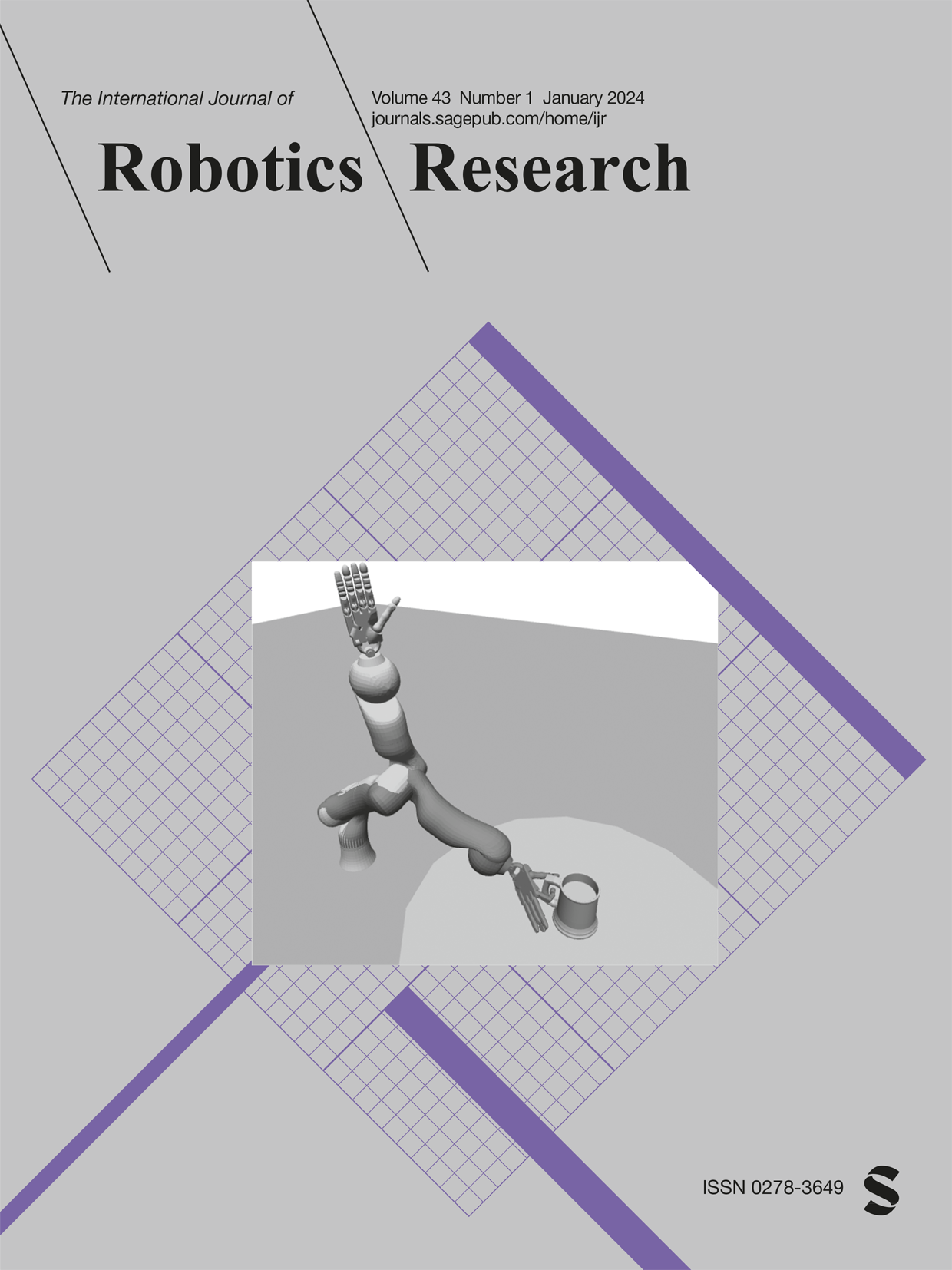Planning to chronicle: Optimal policies for narrative observation of unpredictable events
IF 5
1区 计算机科学
Q1 ROBOTICS
引用次数: 1
Abstract
One important class of applications entails a robot scrutinizing, monitoring, or recording the evolution of an uncertain time-extended process. This sort of situation leads to an interesting family of active perception problems that can be cast as planning problems in which the robot is limited in what it sees and must, thus, choose what to pay attention to. The distinguishing characteristic of this setting is that the robot has influence over what it captures via its sensors, but exercises no causal authority over the process evolving in the world. As such, the robot’s objective is to observe the underlying process and to produce a “chronicle” of occurrent events, subject to a goal specification of the sorts of event sequences that may be of interest. This paper examines variants of such problems in which the robot aims to collect sets of observations to meet a rich specification of their sequential structure. We study this class of problems by modeling a stochastic process via a variant of a hidden Markov model and specify the event sequences of interest as a regular language, developing a vocabulary of “mutators” that enable sophisticated requirements to be expressed. Under different suppositions on the information gleaned about the event model, we formulate and solve different planning problems. The core underlying idea is the construction of a product between the event model and a specification automaton. Using this product, we compute a policy that minimizes the expected number of steps to reach a goal state. We introduce a general algorithm for this problem as well as several more efficient algorithms for important special cases. The paper reports and compares performance metrics by drawing on some small case studies analyzed in depth via simulation. Specifically, we study the effect of the robot’s observation model on the average time required for the robot to record a desired story. We also compare our algorithm with a baseline greedy algorithm, showing that our algorithm outperforms the greedy algorithm in terms of the average time to record a desired story. In addition, experiments show that the algorithms tailored to specialized variants of the problem are rather more efficient than the general algorithm.计划编年史:对不可预测事件进行叙事观察的最佳策略
一类重要的应用需要机器人仔细检查、监控或记录一个不确定的时间扩展过程的演变。这种情况导致了一系列有趣的主动感知问题,这些问题可以被视为计划问题,在这些问题中,机器人所看到的东西是有限的,因此必须选择关注什么。这种设置的显著特征是,机器人对其通过传感器捕获的内容具有影响力,但对世界的演变过程没有因果权威。因此,机器人的目标是观察潜在的过程,并根据可能感兴趣的事件序列的目标规范,生成发生事件的“编年史”。本文研究了此类问题的变体,其中机器人旨在收集观察集以满足其序列结构的丰富规范。我们通过一个隐马尔可夫模型的变体来建模一个随机过程,并将感兴趣的事件序列指定为一种规则语言来研究这类问题,开发了一个能够表达复杂需求的“突变子”词汇表。在对事件模型收集到的信息的不同假设下,我们制定和解决不同的规划问题。核心的基本思想是在事件模型和规范自动化之间构建产品。使用这个乘积,我们计算一个最小化达到目标状态所需步骤数的策略。我们介绍了解决该问题的一般算法以及针对重要特殊情况的几种更有效的算法。本文通过模拟深入分析了一些小型案例研究,报告并比较了性能指标。具体来说,我们研究了机器人的观察模型对机器人记录一个期望故事所需平均时间的影响。我们还将我们的算法与基线贪婪算法进行了比较,表明我们的算法在记录所需故事的平均时间方面优于贪婪算法。此外,实验表明,针对问题的特定变体定制的算法比通用算法效率更高。
本文章由计算机程序翻译,如有差异,请以英文原文为准。
求助全文
约1分钟内获得全文
求助全文
来源期刊
CiteScore
22.20
自引率
0.00%
发文量
34
审稿时长
6-12 weeks
期刊介绍:
The International Journal of Robotics Research (IJRR) has been a leading peer-reviewed publication in the field for over two decades. It holds the distinction of being the first scholarly journal dedicated to robotics research.
IJRR presents cutting-edge and thought-provoking original research papers, articles, and reviews that delve into groundbreaking trends, technical advancements, and theoretical developments in robotics. Renowned scholars and practitioners contribute to its content, offering their expertise and insights. This journal covers a wide range of topics, going beyond narrow technical advancements to encompass various aspects of robotics.
The primary aim of IJRR is to publish work that has lasting value for the scientific and technological advancement of the field. Only original, robust, and practical research that can serve as a foundation for further progress is considered for publication. The focus is on producing content that will remain valuable and relevant over time.
In summary, IJRR stands as a prestigious publication that drives innovation and knowledge in robotics research.

 求助内容:
求助内容: 应助结果提醒方式:
应助结果提醒方式:


